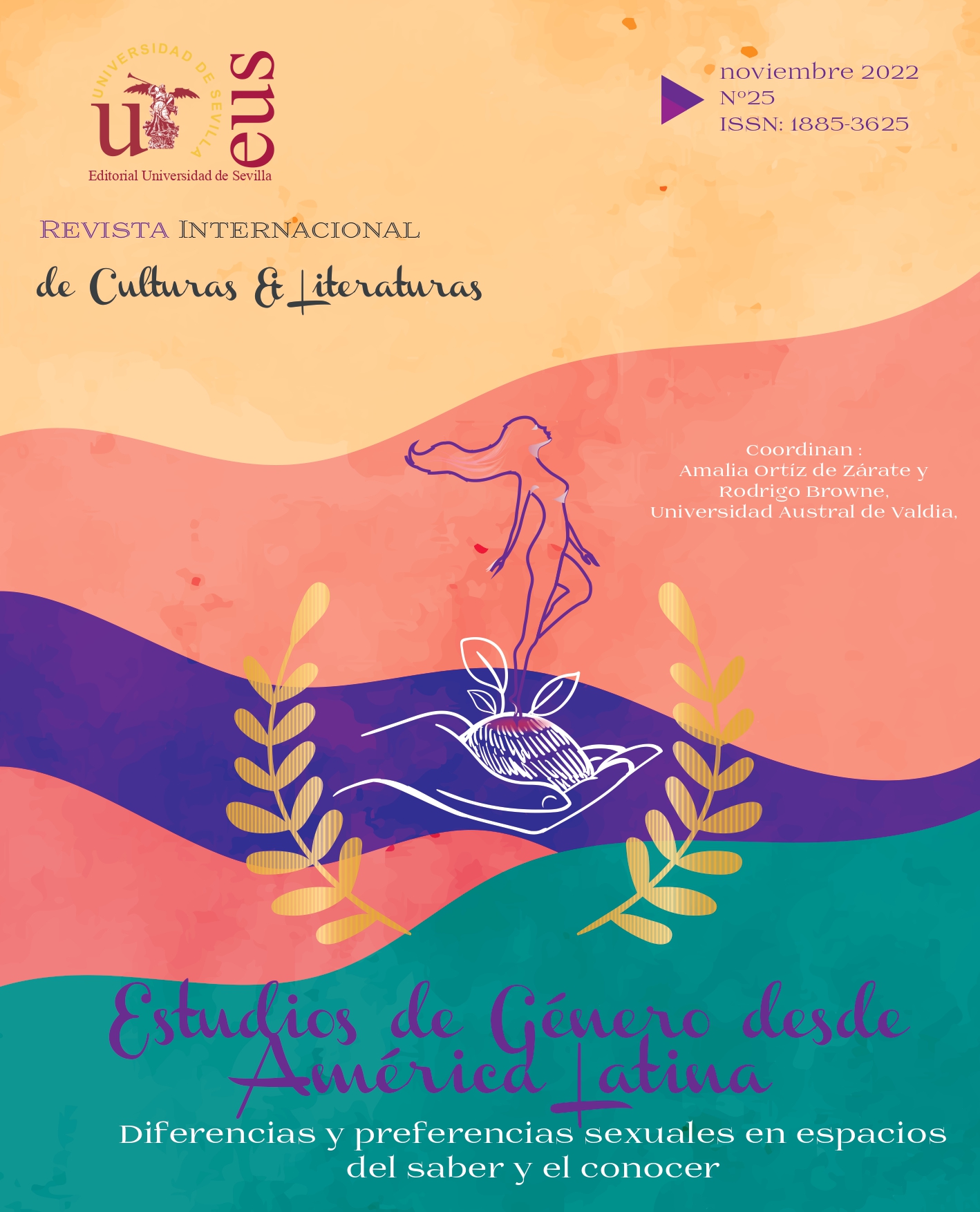From plurality to a space of one's own. The 'communal voice' in "Ninfe sbranate" by Francesca Cavallero (2020) and "Il catalogo delle vergini" by Nicoletta Vallorani (2017).
DOI:
https://doi.org/10.12795/RICL2022.i25.24Keywords:
science-fiction, dystopian, feminism, communal voiceAbstract
The dystopian texts "Ninfe sbranate" by Francesca Cavallero (2020) and "Il catalogo delle vergini" by Nicoletta Vallorani (2017) portray worlds permeated by the objectification of women. Inside these worlds, a monstrous male network takes advantage of the cisheteropatriarchal system to cover their crimes: trafficking of women, sexual violence and femicide. However, in both stories these female victims, defined as the 'others', are no longer silenced, but manage – from a space between life and death – to take over part of the narrative. In this way, they are able to tell their story and denounce their abusers. By using Susan Lanser's (1992) 'communal voice', we will analyse the space created to give voice to this repressed collective. Its use interferes with the main narrative and creates a place from which to claim one's right to justice. The purpose of this contribution is thus to highlight the importance of narratology when reading texts from the feminist perspective, and to demonstrate this through the spaces created by the narrative voices present in both texts.
Downloads
References
BALSAMO, Anne (1996). Technologies of the Gendered Body. Reading Cyborg Women. Durham/Londres: Duke University Press.
BARCELÓ, Elia (2009). Reflexiones acerca de la elección del narrador en los textos fantásticos: estrategias y efectos. En T. López-Pellisa/F. Á. Moreno (coord..), Ensayos sobre ciencia ficción y literatura fantástica (pp. 18-39). Asociación Cultural Xatafi/Universidad Carlos III de Madrid.
BUTLER, Judith (1999). Gender Trouble. Feminism and the Subversion of Identity. Londres/Nueva York: Routledge.
BUTLER, Judith (2004). Precarious Life. The Power of Mourning and Violence. Londres/Nueva York: Verso.
BRIONI, Simone y COMBERIATI, Daniele (2019). Italian Science Fiction. The Other in Literature and Film. Milán/Udine: Palgrave macmillan.
CAVALCANTI, Ildney (2003). “The Writing of Utopia and the Feminist Critical Dystopia: Suzy McKee Charna’s Holdfast Series”. En R. Baccolini y T. Moylan (coord.), Dark Horizons. Science Fiction and the Dystopian Imagination (pp. 47-68). Routledge.
CAVALLERO, Francesca (2020). “Ninfe sbranate”. En F. Forte (coord.), Distòpia [Edición del Kindle] (pp. 83-119). Mondadori.
CORRADI, Consuelo (2007). “Il corpo della donna come luogo della guerra”. Difesa sociale, 2(7), pp. 5-18.
CRENSHAW, Kimberle (1989). “Demarginalizing the Intersection of Race and Sex: A Black Feminist Critique of Antidiscrimination Doctrine, Feminist Theory and Antiracist Politics”. University of Chicago Legal Forum, 1989(1), pp. 139-167.
GOEL, Urmila (2021). “Intersektional Forschen. Kontextspezifisch, offen, selbstreflexiv”. En A. Biele Mefebue, A. Bührmann y S. Grenz (coord.), Handbuch Intersektionalitätsforschung (pp.1-13). Wiesbaden: Springer VS.
GRAVES, Robert (2018). I miti greci. Milán: Longanesi.
KRISTEVA, Julia (1980). Pouvoirs de l’horreur. Essai sur l’abjection. París: Éditions du Seuil/Éditions Points.
LANSER, Susan Sniader (1981). The Narrative Act. Point of View in Prose Fiction. Princeton: Princeton University Press.
LANSER, Susan Sniader (1992). Fictions of Authority: Women Writers and Narrative Voice. Ithaca/Londres: Cornell University Press.
LÓPEZ-PELLISA, Teresa (2018). “Prólogo”. En T. López-Pellisa (coord.), Las otras. Antología de mujeres artificiales (pp. 7-19). León: Eolas Ediciones.
MORENO, Fernando Ángel (2010). Teoría de la Literatura de Ciencia Ficción. Poética y retórica de lo prospectivo. Vitoria: Portal Editions.
MUNCASTER, Kody (2021). “Cisheteropatriarchy”. En K. K. Strunk y S. A. Shelton (coord.), Encyclopedia of Queer Studies in Education (pp. 87-88). Leiden: Brill.
PASOLINI, Anna y VALLORANI, Nicoletta (2020). Corpi magici. Scritture incarnate dal fantastico alla fantascienza. Milán/Udine: Mimesis Edizioni.
RADFORD, Jill (1992). “Introduction”. En J. Radford y D. E.H. Russell (coord.), Femicide. The Politics of Woman Killing (pp. 3-12). Nueva York: Twayne Publishers.
RUBIN, Gayle (1975). “The Traffic in Women: Notes on the “Political Economy” of Sex””. En R.R. Reiter (coord.), Toward an Anthropology of Women (pp. 157-210). Nueva York/Londres: Monthly Review Press.
ROBLES MORENO, Lola (2009). “Las otras: feminismo, teoría queer y escritoras de literatura fantástica”. En T. López-Pellisa y F. Á. Moreno (coord.), Ensayos sobre literatura fantástica y de ciencia ficción (pp. 615-627). Asociación Cultural Xatafi/Universidad Carlos III de Madrid.
ROBLES MORENO, Lola (2018). En regiones extrañas. Un mapa de la ciencia ficción, lo fantástico y lo maravilloso. Cádiz: Cazador de Ratas Editorial.
RUSS, Joanna (2007). The Country You Have Never Seen. Essays and Reviews. Liverpool: Liverpool University Press.
SUVIN, Darko (1979). Metamorphoses of Science Fiction. On the Poetics and History of a Literary Genre. New Haven/Londres: Yale University Press.
VALLORANI, Nicoletta (2017). Il catalogo delle vergini. En Vallorani, N. (2017), Il catalogo delle vergini [Edición del Kindle]. Future Fiction 49.

